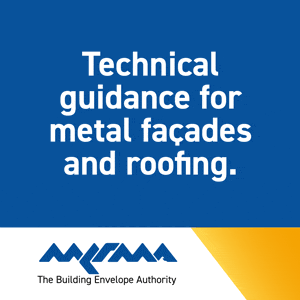How to heat larger commercial units
- Specify & Build
- Jun 16
- 3 min read
Josh Collins, Heat Networks Manager at Altecnic, explores the key considerations when specifying heating systems for larger commercial properties and how selecting the right technologies can deliver lasting results.

Heating large commercial buildings, whether modern office blocks, retail spaces or mixed-use developments, presents a unique set of challenges and opportunities. As the demand for energy efficient, compliant and future-proof systems continues to grow, specifiers play a pivotal role in delivering solutions that balance performance, cost-effectiveness and sustainability.
Commercial-scale heating is a world apart from domestic systems. Larger footprints, varied usage patterns, and complex internal layouts require tailored heating strategies. One of the primary challenges when working with large-scale buildings is ensuring even and efficient heat distribution across diverse zones. These often include a mix of uses with varying heat demands, from open-plan offices and communal areas to storage zones and technical rooms. Proper zoning and load distribution are essential to maintain comfort without overburdening the system or wasting energy. Compounding this is the sheer scale of heat loss that can occur in larger volumes. Without careful insulation, smart layout planning, and the right components, the system’s efficiency can rapidly deteriorate.
System complexity is also a defining feature of commercial heating projects. Buildings increasingly incorporate a mix of heat sources including traditional boilers, renewable heat pumps, and district heating networks. Ensuring these elements work together harmoniously requires not just technical understanding but also a robust approach to specification. Integration is key: incompatible or poorly matched components can lead to inefficiency, higher maintenance costs, and ultimately, occupant dissatisfaction.
Regulations and compliance
Regulatory compliance is a critical consideration for specifiers working on large commercial heating systems. As energy efficiency and carbon reduction targets become central to national and international policy, the legislative framework around building services is evolving rapidly and becoming increasingly complex. Understanding the relevant standards and certifications is essential to ensuring both legal compliance and alignment with broader environmental and commercial goals.

Part L (Conservation of Fuel and Power) sets out the minimum energy performance requirements for new and existing buildings in the UK. Recent updates have introduced more stringent standards for commercial properties, with a greater emphasis on reducing operational carbon emissions and improving thermal performance. For heating systems, this means higher efficiency thresholds, mandatory use of low-carbon technologies where feasible, and the integration of controls that limit energy waste. Specifiers must be prepared to demonstrate compliance through detailed calculations and modelling, ensuring that chosen systems and components contribute to the building’s overall energy strategy.
Beyond legal requirements, sustainability frameworks such as BREEAM (Building Research Establishment Environmental Assessment Method) and LEED (Leadership in Energy and Environmental Design) are playing an increasingly prominent role in commercial development. These certifications assess the environmental performance of a building across a range of criteria including energy efficiency, carbon footprint, and indoor environmental quality. Heating systems can significantly influence a building’s rating, especially in categories related to energy use, system controllability, and lifecycle impact. Specifiers aiming for high ratings must not only choose efficient systems but also consider factors like system modularity, ease of maintenance, and compatibility with renewable energy sources.
Embrace smart, sustainable solutions
Looking forward, the push for decarbonisation means heating systems must be energy-efficient and future-ready. Heat pumps and hybrid systems are increasingly being adopted, offering a low-carbon alternative to traditional fossil-fuel-based heating when correctly specified and integrated into the existing system.
Smart controls and digital monitoring technologies are also gaining traction. These not only allow for real-time system optimisation and predictive maintenance but also empower building managers to track performance and make data-driven adjustments. Taking a whole-system approach, where all components are designed to work in harmony, is essential to unlocking the full potential of these innovations.
Heating larger commercial buildings is not simply about selecting powerful equipment. It’s about understanding how systems interact, how regulations shape performance requirements, and how future demands will evolve. The right choices at the specification stage can lead to reduced operating costs, lower emissions, and greater occupant satisfaction – all while simplifying maintenance and extending system lifespan.
























































.png)
